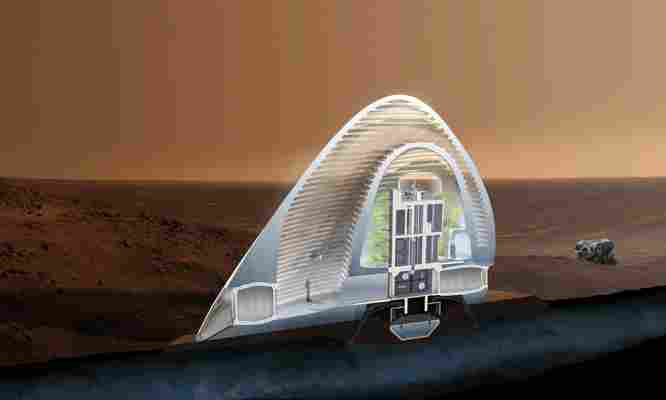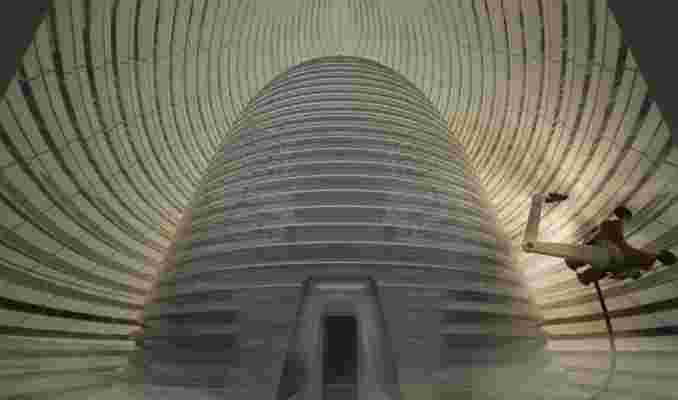In the wake of NASA’s announcement Monday that it had found proof of liquid water on Mars, the outcome of a NASA-sponsored architectural competition for building a 3-D–printed habitat on the planet—announced just the day before—seems more important than ever. The competition, organized under NASA’s Centennial Challenges program, asked architects to conceive of a habitat for astronauts that could be built by 3-D–printing robots ahead of human arrival on an eventual mission to Mars.

Cutaway view of the habitat.
The winner was Ice House, a project designed by New York–based Space Exploration Architecture ( SEArch ) and Clouds Architecture Office ( Clouds AO ). Where many of the other entries envisioned bunkerlike structures and subterranean accommodations made out of Martian earth known as regolith, the winning team imagined an aboveground structure made from two nested ice shells, constructed by 3-D–printing robots after harvesting underground water, beneath an ETFE membrane.
“We thought, who wants to live underground after traveling all that way?” said project leader Michael Morris, a member of SEArch, a principal of the New York architecture firm Morris|Sato Studio, and the instructor of a space architecture course at Pratt Institute. “We wanted a design that made a human presence above the ground and that was transparent or translucent so there was a connection to the landscape and sun.”

An area between the two ice shells serves as a buffer from the Martian environment.
Inside the structure, a four-story living space is separated from the ice by translucent Aerogel insulation while a vertical indoor garden supplements oxygen and food. Although the concept may seem like the stuff of dreams, the team has already been working with partners on 3-D ice-printing demonstrations.
“This project wasn’t speculative at all,” says Morris. “We really wanted to prove we could do this, and that’s what came across to the jury—this idea is feasible.” The next phase of NASA’s competition will focus on fabrication technologies and building a full-scale sample of a habitat.
